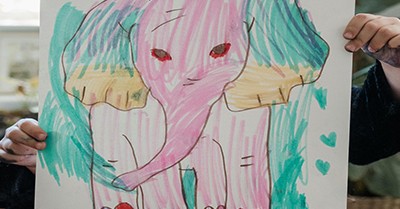A work sample observation in early childhood education is a method used by educators to document and assess a child's learning and development through collected samples of their work. These samples can include drawings, paintings, writing, collages, and photographs of projects.
Purpose of Work Sample Observations
-
Track Development: Helps educators observe a child's progress in areas like literacy, mathematics, fine motor skills, and cognitive abilities.
-
Understand Interests: Provides insight into a child's emerging abilities and personal interests.
-
Authentic Documentation: Offers tangible evidence of a child's learning journey over time.
How It Works
Educators collect work samples and may add interpretations, observations, or brief comments to enhance the meaning behind the child's work. For example, if a child draws a picture of ants, the educator might ask them to describe it, helping assess their understanding of insects and their habitats.
What Are Best Practices For Conducting Work Sample Observations?
Conducting work sample observations effectively requires careful planning, objective assessment, and meaningful documentation. Here are some best practices to follow:
1. Define Clear Objectives
-
Identify what skills, behaviors, or learning outcomes you want to assess.
-
Ensure observations align with developmental milestones or workplace performance goals.
2. Collect Authentic Work Samples
-
Gather a variety of work samples that reflect different aspects of the individual's abilities.
-
Include drawings, writing, projects, or recorded activities for a well-rounded assessment.
3. Observe Without Interfering
-
Allow individuals to complete tasks naturally without unnecessary intervention.
-
Take notes on their approach, problem-solving skills, and engagement levels.
4. Use Structured Documentation
-
Maintain organized records with dates, descriptions, and observations.
-
Add educator or supervisor comments to provide context and insights.
5. Encourage Reflection & Feedback
-
Discuss work samples with the individual to understand their thought process.
-
Provide constructive feedback and encourage self-assessment.
6. Ensure Consistency & Fairness
-
Conduct observations at different times to get a comprehensive view.
-
Avoid bias by focusing on objective criteria rather than personal opinions.
How Does This Method Improve A Child's Learning Outcomes
Work sample observations significantly enhance a child's learning outcomes by providing authentic documentation of their progress and development. Here’s how:
1. Tracks Growth Over Time
Educators can see tangible evidence of a child's learning journey, helping them identify strengths and areas for improvement.
2. Supports Individualized Learning
By analyzing work samples, teachers can tailor lessons to match a child's unique learning style and needs.
3. Encourages Reflection & Self-Assessment
Children can review their own work, fostering self-awareness and critical thinking skills.
4. Strengthens Communication Between Educators & Families
Parents can see how their child learns through play and structured activities, making learning more transparent.
5. Enhances Curriculum Planning
Educators use work samples to adjust teaching strategies and ensure children meet developmental milestones.
Examples Of How To Use Work Samples
Here are some examples of how educators use work sample observations.
1. Literacy Development
- A teacher collects a child's writing samples over time to track improvements in letter formation, sentence structure, and storytelling.
- Observations help identify areas where the child may need additional support, such as spelling or comprehension.
2. Fine Motor Skills
-
Educators observe how children use scissors, pencils, and paintbrushes in their artwork.
-
Work samples provide insight into hand-eye coordination and dexterity development.
3. Problem-Solving & Creativity
-
Teachers document children's block-building projects or puzzle-solving activities to assess their logical thinking and creativity.
-
Observations help educators understand how children approach challenges and develop solutions.
4. Social & Emotional Growth
-
Work samples like group art projects or collaborative storytelling show how children interact with peers.
-
Educators use these observations to support social skill development and emotional expression.
Linking Work Samples To The EYLF
Linking work samples to the Early Years Learning Framework (EYLF) helps educators assess children's development and align activities with learning outcomes. Here are some examples:
1. EYLF Outcome 1: Children Have a Strong Sense of Identity
-
Example: A child creates a self-portrait using various materials.
-
Link: This demonstrates self-awareness and confidence in expressing their identity.
2. EYLF Outcome 2: Children Are Connected with and Contribute to Their World
-
Example: A child draws a picture of their family or community.
-
Link: Shows understanding of relationships and their place in the world.
3. EYLF Outcome 3: Children Have a Strong Sense of Well-being
-
Example: A child participates in a yoga or mindfulness activity and draws how they feel afterward.
-
Link: Reflects emotional regulation and awareness of well-being.
4. EYLF Outcome 4: Children Are Confident and Involved Learners
-
Example: A child builds a structure using blocks and explains their design.
-
Link: Demonstrates problem-solving, creativity, and persistence.
5. EYLF Outcome 5: Children Are Effective Communicators
-
Example: A child writes or illustrates a short story.
-
Link: Shows literacy development and ability to express ideas.
Further Reading
Different Types Of Observation Methods
Observations in Childcare
Work Sample Observations In Childcare
